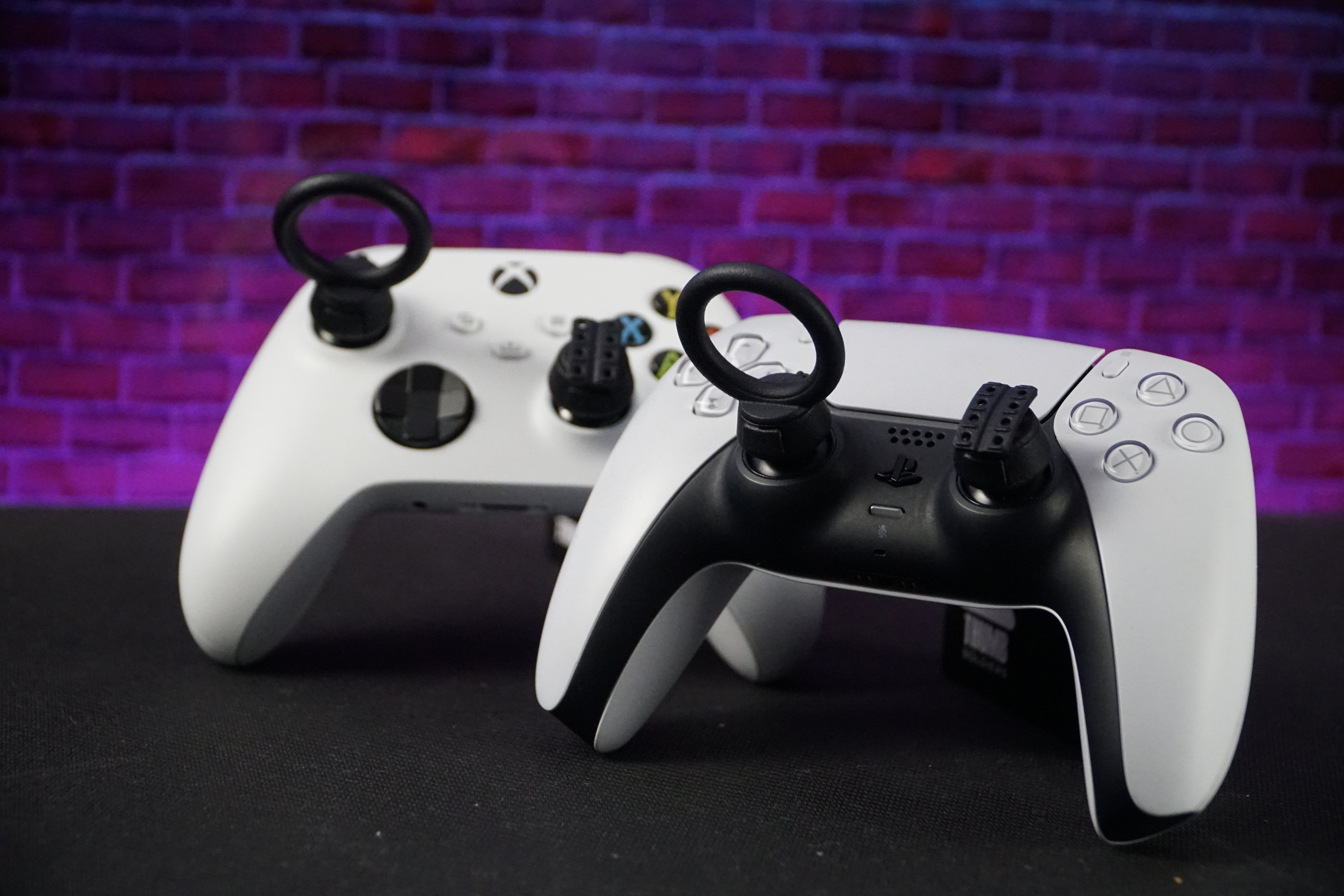Fighting games are a unique test of reflexes, strategy, memory and — when it all comes down to it — execution. Since Karate Champ kicked off the genre in 1984 and Street Fighter defined it a few years later in 1987, fighting games have gotten more complex and more demanding.
Thankfully, adaptive joysticks have recently surged in popularity, providing greater accessibility for players with disabilities and enhanced precision for all fighting game fans. Join us as we break down the basics of adaptive joysticks, which style works best for which type of fighting game, and more.
What are adaptive joysticks?
Adaptive joysticks are specialised controllers designed to accommodate players with physical abilities. They usually slot into a larger adaptive controller apparatus, with options in many sizes and shapes to meet variable accessibility needs.
They’ve been around in various forms for a while, but have become more mainstream in this decade, with major console manufacturers creating their own proprietary adaptive controllers with adaptive joystick options.
Key features of adaptive joysticks:
-
Modular designs: adaptive joysticks and their button layouts can usually be rearranged to fit player’s variable accessibility needs.
-
Programmable macros: allows complex inputs to be executed with less / minimal movement.
-
Pressure sensitivity: players can adjust how much force is needed to register an input, which makes hitting combos easier and more.
Selecting the right adaptive joystick for different types of fighting games
Before selecting a main, you need to choose the right adaptive joystick setup based on the type of fighting game you’re playing. Whether you’re trying to nail that Hadouken in Street Fighter 6 or finally counter your sibling’s Ness spam in Super Smash Bros. Ultimate, the right adaptive joystick makes all the difference.
1. Platform fighters like Super Smash Bros, Brawlhalla, Nickelodeon All-Star Brawl
Platform fighters like Super Smash Bros prioritise constant movement and simplified attacks over intricate combos and complex execution. Fighters of this ilk (especially Smash, which reigns supreme) are a great place for players with disabilities to start, especially with the right adaptive joystick setup.
Recommended setup: a large adaptive joystick with adjustable sensitivity. This will be easy to grab and move, and you can program it to register even the lightest inputs, making tilts and aerial movement easier to pull off.
2. Traditional 2D fighters like Street Fighter, Mortal Kombat
2D fighters have always centred on tight execution, quarter-circle motions, and at the top level, frame-perfect inputs. Movement is a little less expansive here, but getting those directional inputs right is a lot easier with an adaptive joystick.
Recommended setup: an arcade-style joystick with adjustable sensitivity and a light-touch lever. Because more complex movements are needed (like Z-motions in Street Fighter), programming a macro button can make them easier to pull off.
-
Modern 3D Fighters like Street Fighter 6, Tekken 8, and SoulCalibur
Many of the most popular fighting games in the world exist in this bracket, including recent mega-hits like SF6 and Tekken 8. These fighters tend to focus on movement, sidestepping and long command strings.
Recommended setup: an adaptive joystick with customisable inputs. To make movement easier, you can map specific moves to an individual input, allowing you to pull of instant backdashes in Tekken 8, for example.
While we’ve given specific use cases here, it’s important to remember that the best way to use adaptive joysticks to play fighting games is to tailor it to your needs. This will require some experimentation, from figuring out which adaptive controller you want, to finding the right adaptive joystick to pair it with. It all comes down to what works best for you.
A new challenger emerges: Thumb Soldier’s adaptive thumbsticks
Cue Smash theme! For fighting game fans with limited dexterity or mobility, our ‘Sticks’ adaptive thumbsticks provide enhanced control and reduced strain. These easily-attachable thumbsticks increase height and range, making movement and directional inputs smoother and more accessible.
View Sticks adaptive thumbsticks.
Adaptive joysticks: levelling the playing field, and making fighting games more accessible than ever
Adaptive joysticks and adaptive controllers have been a game-changer for fighting game fans with accessibility concerns. No longer limited by traditional controller layouts, players can now customise their setups to match their individual needs. And that’s where the true power lies: tweaking your setup to find a layout that works for you.
At Thumb Soldiers, we support the push for greater accessibility in gaming, and our products reflect that mission. If you’re looking to step up your game with the right adaptive gear, be sure to check out our range.



Share:
Playing FPS Games with a Disability: Tips and Tools You Need
How to Play Your Favourite Xbox and Playstation Games With a Disability